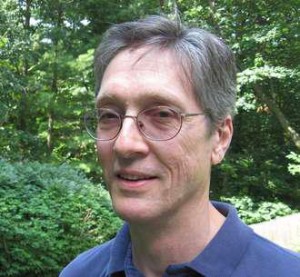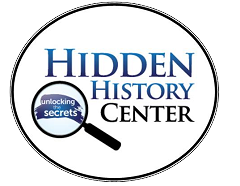The Phoenix Program in Vietnam in many ways provides a blue print for our own times. Assassinations and torture are the essence of the war on terror. As are death squads and false flag terror attacks. As are mass surveillance of the populace.
 Thanks to the work of Douglas Valentine in his nonpareil book The Phoenix Program we have an extremely detailed account of the Phoenix Program, exposing a classic example of the brutality of the CIA’s counter insurgency wars. By studying the Phoenix program one gains a great deal of insight into the wars in Afghanistan, Syria and Iraq.
Thanks to the work of Douglas Valentine in his nonpareil book The Phoenix Program we have an extremely detailed account of the Phoenix Program, exposing a classic example of the brutality of the CIA’s counter insurgency wars. By studying the Phoenix program one gains a great deal of insight into the wars in Afghanistan, Syria and Iraq.
What was the Phoenix Program?
From the perspective of a Bureaucrat like Bill Colby it was merely an attempt to coordinate a number of pre-existing programs. Sort of like the Department of Homeland Security or more precisely its fusion centers where military, police, and intelligence agencies pool information on their enemies the American people. Phoenix sought to provide cooperation between various Vietnamese and American agencies so that they could coordinate their war on the Vietnamese people. What was the Phoenix program? A massive campaign of torture and assassination aimed at destroying what the CIA called the VCI the Viet Cong Infrastructure. Amusingly this term was as confusing to Vietnamese as it probably is to you.
Read Hugo Turner’s full review of The Phoenix Program here:
The documentation of The Phoenix Program includes an archive at Cryptocomb.org wherein is published, “over 8GB’s of audio recordings that Mr. Valentine collected throughout his personal interviews with former CIA and U.S. Military Officers while researching for his book, The Phoenix Program. The Phoenix Program for the unacquainted was a CIA generated operation that sponsored mass arrests, terrorism, torture, murder and lies during the war in Vietnam. Many of the players went on to walk the halls of the Pentagon, Congress, the Department of Homeland Security, and major National Security Corporations. The recordings are just as Cryptocomb received them, in the raw, not edited or redacted. Cryptocomb would like to thank Douglas Valentine for preserving these recordings and providing them to Cryptocomb. It’s only through his hard work and diligence that everyone benefits from the truth.”
Doug Valentine writing in “How I Came to Understand the CIA ” (counterpunch, 12-23-16):
I’ve been researching the CIA for over 30 years and I’ve interviewed over 100 CIA officers. So naturally, people often wonder how I prepare myself. In one of the interviews that’s included in my new book, James Tracy asked me how I know where to look for information that’s pertinent to a given story.
I told James that’s it’s complicated, that my experience is different from most other CIA researchers and writers. I didn’t follow the usual career course. I didn’t go to the Columbia School of Journalism. I’m a college dropout who climbed trees for a living for ten years. But I did want to be a writer, and my philosophy of life is based on the study of language and literary criticism. I take a very broad approach. When I went to college, I studied Greek and Roman literature, read the Norton anthologies of English and American literature, and took courses in classical myth and the Bible.
Very early in my studies I was introduced literary critics like Robert Graves, poet and author of The White Goddess, and Sir James Fraser who wrote The Golden Bough. Fraser brought a socio-anthropological way of looking at the world of literature. That led me to Mircea Eliade, Carl Jung, Eric Newman, Northrop Frye and a few other people who approached literature from a variety of different perspectives – psychological, political, anthropological, sociological, historical, philosophical. All those things were of interest to me. So when I look at a subject, I look at it comprehensively from all those different points of view, plus my blue collar, working class perspective.
Literary criticism teaches the power of symbolic transformation, of processing experience into ideas, into meaning. To be a Madison Avenue adman, one must understand how to use symbols and myths to sell commodities. Admen use logos and slogans, and so do political propagandists. Left or right; doesn’t matter. The left is as adept at branding as the right. To be a speech writer or public relations consultant one must, above all, understand the archetypal power of the myth of the hero. That way you can transform Joe the Plumber, or even a mass murdering politician, into a national hero.
When I decided to research and write about the CIA’s Phoenix program, that was how I thought about it. I went directly to William Colby, who’d been Director of the Central Intelligence Agency. I didn’t know enough to be intimidated, it was just the smart
thing to do. Colby was the person most associated with Phoenix, the controversial CIA “assassination” program that resulted in the death of tens of thousands of civilians during the Vietnam War. No one had written a book about it, so I wrote Colby a letter and sent him my first book, The Hotel Tacloban, which is about my father’s experiences in combat and as a POW in World War Two.
Tacloban was key to unlocking the CIA’s door, for two reasons. First, it demonstrated that I understood what it means to be a soldier, which was essential in terms of winning the trust of CIA officers, most of whom think of themselves as soldiers. The CIA is set up like a military organization with a sacred chain of command. Somebody tells you what to do and you salute and do it. Colby himself had parachuted behind enemy lines in France during World War Two.
On a deeper level, Tacloban showed that I could bridge the “man” gap that divided my frag-happy, draft-dodging generation from Colby’s “saved the world for freedom and democracy” generation. I felt that “father-son” dynamic with Colby and several of the senior spooks he referred me to. Some of them even acknowledged that I was attempting to reconcile with them in a way their own sons never had.
So I told Colby I wanted to write a book that would de-mystify the Phoenix program, and he was all for that. Colby liked my approach – to look at it from all these different points of view – so he got behind me and introduced me to a lot of senior CIA people. And that gave me access from the inside. After that it was easy. I have good interview skills. I was able to persuade a lot of these CIA people to talk about Phoenix. I approached it from an organizational point of view, which is essential when writing about bureaucracies like the CIA or the DEA. You have to understand them as a bureaucracy, that they have an historical arc. They begin somewhere, they have a Congressional mandate, they have a purpose, and organizational and management structures. And in that regard I really lucked out. One of the first people I interviewed was the CIA officer, Nelson Brickham, who organized the Phoenix program in 1967 in Saigon. Brickham graduated magna cum laude from Yale and was something of an organizational genius. He explained to me how he organized Phoenix. He also explained the different divisions and branches of the CIA so I’d be able to understand it. All of that went into my book The Phoenix Program.
So I lucked out. Through Colby I had access to the CIA people who created the Phoenix program and its various components. I was able to find out what was on their minds and why they did what they did. That never would have happened if I had gone to the Columbia School of Journalism, or if I’d been working for mainstream media editors for many years. I’d have had a much narrower way of going about the thing. But the CIA officers I spoke with loved the broad view that I was bringing to the subject. They liked me asking them about their philosophy. It enabled me to understand the subject comprehensively. I related to them on a very personal level, and when the book came, they reeled. Colby was furious.
So the New York Times killed the book in its cradle. As Guillermo Jiminez noted in one of our interviews, the book didn’t take off until Open Road Media republished it 25 years later as part of their Forbidden Bookshelf series. Guillermo asked me why my book was chosen for the series, why there was new-found interest in Phoenix, and what the CIA is up to, generally, nowadays.
As I explained, when the book came out in 1990, it got a terrible review in The New York Times. Morley Safer, who’d been a reporter in Vietnam, wrote the review. Safer and the Times killed the book because in it I said Phoenix never would have succeeded if the reporters in Vietnam hadn’t covered for the CIA.
Several senior CIA officers told me the same thing, that some correspondent “was always in my office. He’d bring a bottle of scotch and I’d tell him what was going on.” The celebrity reporters knew what was going on, but they didn’t report about it in exchange for having access.
I said that in the book specifically about The New York Times. I said, “When it comes to the CIA and the press, one hand washes the other. To have access to informed officials, reporters frequently suppress or distort stories. In return, CIA officials leak stories to reporters to whom they owe favors.” I told how, at its most incestuous, reporters and government officials are related. I cited the example of Charles LeMoyne, a Navy officer who ran the CIA’s counter-terror teams for a year in the Delta, and his New York Times correspondent brother James. I said that if Ed Lansdale hadn’t had Joseph Alsop to print his black propaganda in the US, there probably would have been no Vietnam War.
Read more about Doug Valentine and his work here: <douglasvalentine.com>

